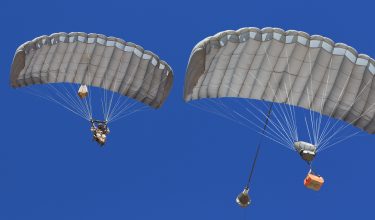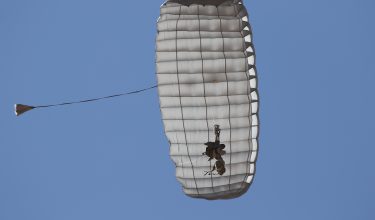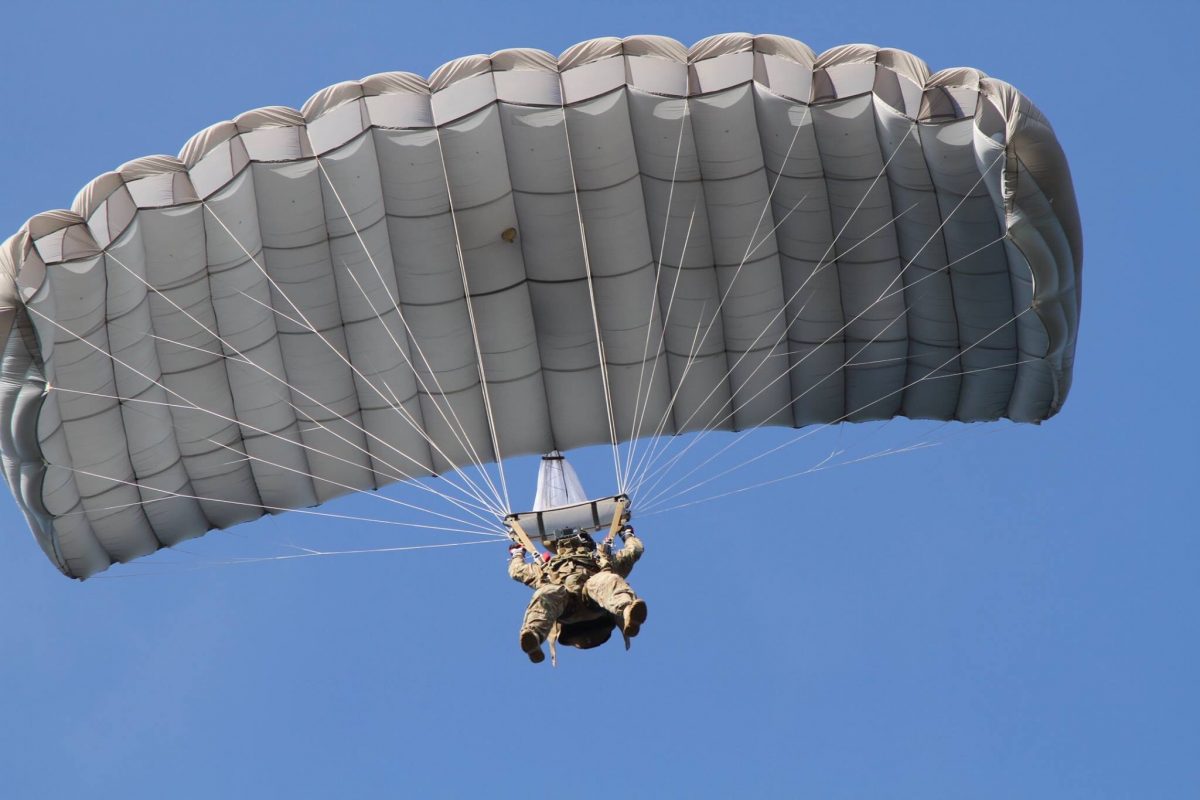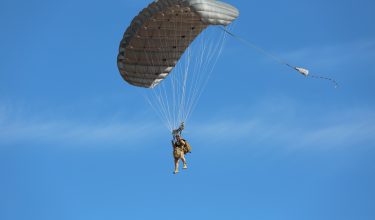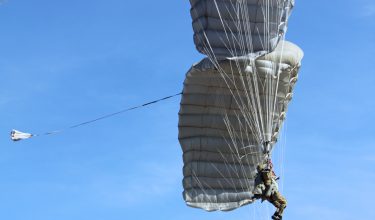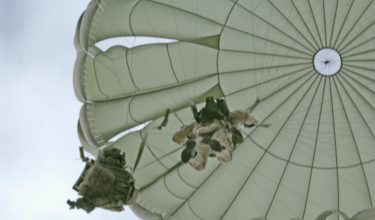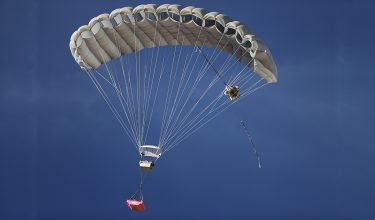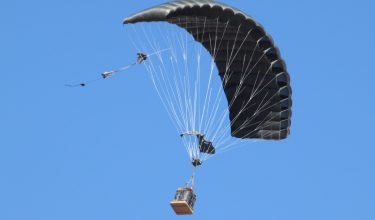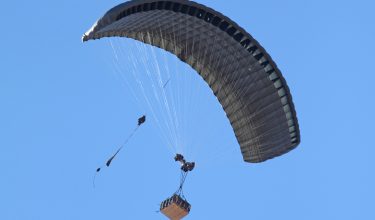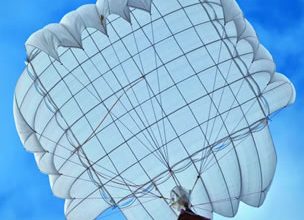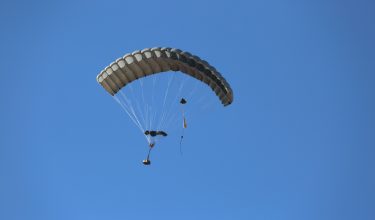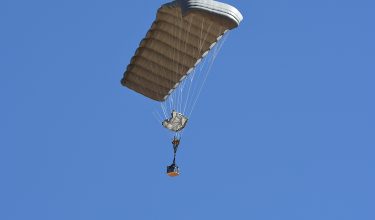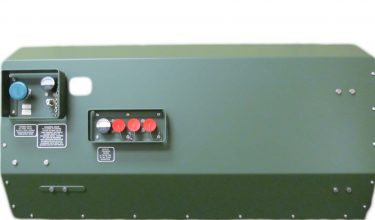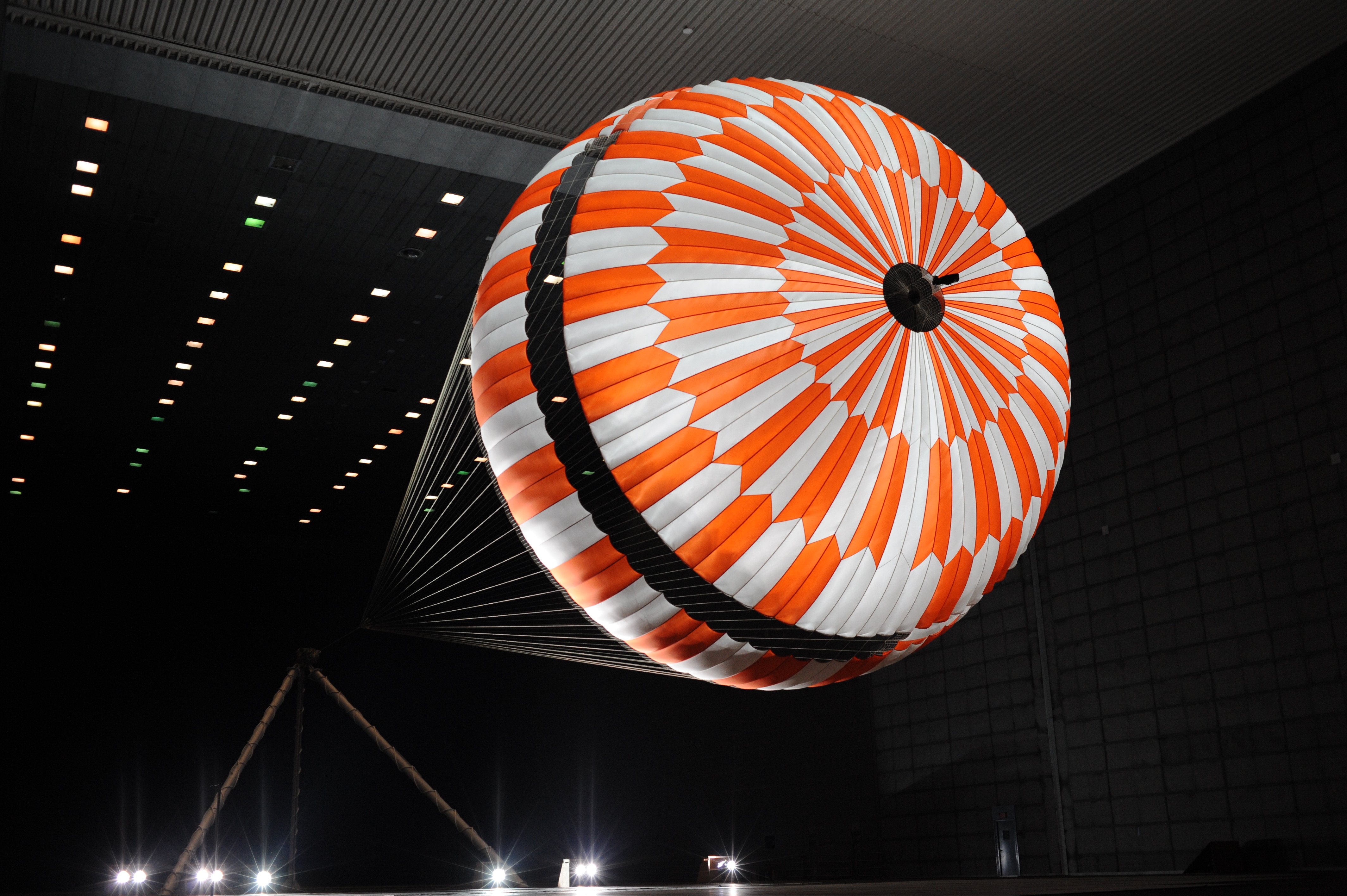Airborne Systems has recently delivered the parachute system that will help the next Mars Rover land on the Red Planet. The delivery marks the culmination of three and a half years of intense design, analysis, and testing.
In 2016, the Jet Propulsion Laboratory (JPL), a federally funded research and development center managed for NASA by Caltech, awarded Airborne Systems a contract to design, analyze, test, build, and conduct integration into the spacecraft. The Mars 2020 parachute system is similar to past parachutes that have delivered vehicles to Mars, including the most recent Mars Science Laboratory (Curiosity Rover) system. However, the Mars 2020 parachute is significantly stronger than all previous Mars parachutes following lessons learned from the JPL Low Density Supersonic Decelerator (LDSD) project flight tests in 2015 and 2016.
The parachute that will deliver the Mars 2020 rover to the Red Planet surface is a 70.5 ft diameter Disk-Gap-Band parachute, a parachute type that carries flight heritage all the way back to the Viking Program that landed on Mars in 1976. Along with the parachute, extensive effort was spent optimizing the design of the Bridle Assembly, the component that attaches the parachute to the vehicle, and the Sabot Capture Net, which ensures that the heavy piston-like device that pushes the packed parachute away from the spacecraft backshell, does not damage the parachute after inflation. Qualifying the parachute system for the Mars 2020 mission required hundreds of destructive material tests, fifteen system level mortar deployment tests, four subsonic wind tunnel tests, and two representative supersonic inflation tests conducted by NASA’s Advance Supersonic Parachute Inflation Research Experiments (ASPIRE) project.
During the first ASPIRE test of the Mars 2020 parachute, a Terrier-Black Brant sounding rocket delivered a payload containing the packed parachute to a peak altitude of 54.8 km. As the payload descended back towards the Atlantic Ocean, and as the speed reached Mach 1.97, the parachute was mortar-deployed behind the payload- the resulting successful deployment and inflation produced a peak load of 55,850 lbf. The second test of the parachute generated a peak load of 67,400 lbf. The large Disk-Gap-Band parachute took only 1.4 seconds to deploy and inflate about a football field behind the payload.
The entire parachute system was built and handled in a controlled area by operators that received specialized training to ensure that Planetary Protection protocols were followed. These protocols include the sterilization of all work areas daily and requirements to wear protective head and face coverings during all operations. The packed parachute was then subjected to a Dry Heat Microbial Reduction (DHMR) process that ensures that the parachute system is sterile and cannot carry Earth-borne microbes to Mars.
The Mars 2020 Rover, while similar to the Curiosity Rover, has several exciting new capabilities. Among these capabilities is the ability to drill into the Martian soil and then seal and store the resulting sample cores. These samples will be stored until a future mission arrives, which will return the samples to Earth. Those samples will present the first opportunity for scientists on Earth to physically examine anything returning from another planet in our Solar System. The Rover will also house an instrument named MOXIE that will convert Martian atmosphere to oxygen. MOXIE will demonstrate that future explorers will have air to breathe, and fuel to return home once their mission is complete. A twin-rotor, solar-powered helicopter is also stowed away onboard the belly of the Rover. The Mars Helicopter is an experimental flight technology with the goal of demonstrating the capabilities required to fly in the extremely thin Martian atmosphere. Never before has any type of device flown on Mars.
Airborne Systems will support parachute system integration into the spacecraft at NASA’s Kennedy Space Center this Spring. Once the Rover is enclosed in its aeroshell, it will then be delivered to Cape Canaveral Air Force Station’s Launch Complex 41 to be integrated with the ULA Atlas V rocket that will hurl it toward Jezero Crater in early July. The Rover is set to touchdown February 18, 2021.
Airborne Systems is immensely proud to be on board this spacecraft and provide a key component to the Entry Decent and Landing phase of this mission.

